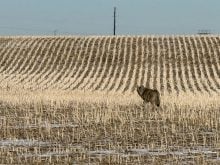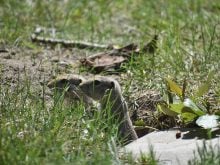The council for the Saskatchewan Rural Municipality of Rudy has approved a land-use application for a 36,000 head feedlot after learning it was not able to deal with a petition for a referendum.
At a special meeting Oct. 28, the council voted 5-2 in favour of a resolution to allow Stuart Thiessen of Namaka Farms at Strathmore, Alta., to build a feedlot on a site near Outlook.
RM administrator Trent Michelman said legal counsel indicated the council lacked the authority to proceed with the petition under the Municipalities Act.
Read Also

Agritechnica Day 2: The future of tractor power, building quicker crop apps and large farms and tech
Agritechnica Day 2: The future of tractor power, building quicker crop apps with Syngenta and large farms and tech
“The Planning and Development Act is very clear that council shall make the decision on it,” he said. “They’re not permitted to send it off to a referendum themselves or to put the question to a referendum as asked for by a petition from the ratepayers.”
Sixty-six people had signed the petition, which was presented to the RM office hours before council was to vote on the land-use application Oct. 21. Michelman had 30 days to determine the petition’s validity.
He said the matter is out of the municipality’s hands.
Thiessen must now apply to the provincial government under the Agricultural Operations Act.
Andy Jansen, manager of agricultural operations, said the application would have to detail three key components of the business plan.
It must include a waste storage plan, a waste management plan and a mortality management plan.
“We’ll be looking for a normal day-to-day losses plan,” Jansen said. “Then we’ll be looking for a mass mortality plan.”
He said Saskatchewan’s act focuses on water protection, which differs from other jurisdictions.
In Alberta, the provincial legislation is tied more closely to land-use planning, has minimal separation distances and includes things such as odour.
Those opposed to the feedlot are worried about the availability and contamination of water and the facility’s proximity to the South Saskatchewan River and irrigation areas.
Jansen said the proponent would have to apply to the Saskatchewan Watershed Authority for an allocation.
“The feedlot will need to make application to the watershed authority and will have to show them how much they want to use, how they’re going to get it there and have enough information to say that they’re not going to limit or prevent other people from using the resource,” he said.
There are other regulations, including occupational health and safety and the Clean Air Act.
Once an application is received by the agriculture ministry, it is referred to other agencies. Jansen said this is done to try to mirror the environmental assessment process.
Under environmental regulations, there are triggers that could result in the need for an environmental impact statement.















